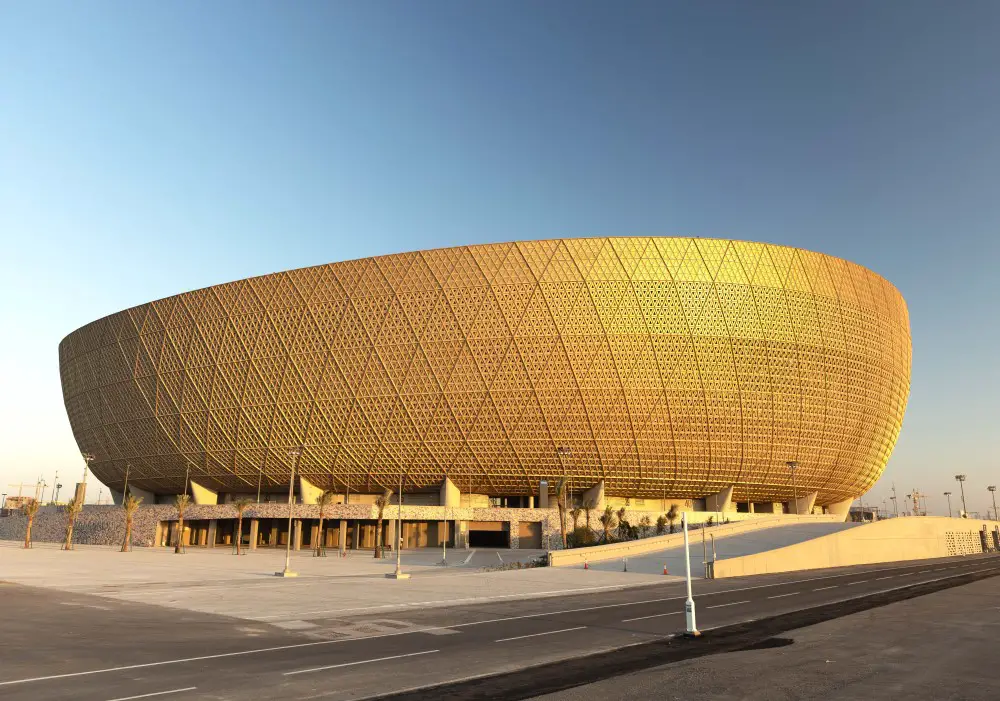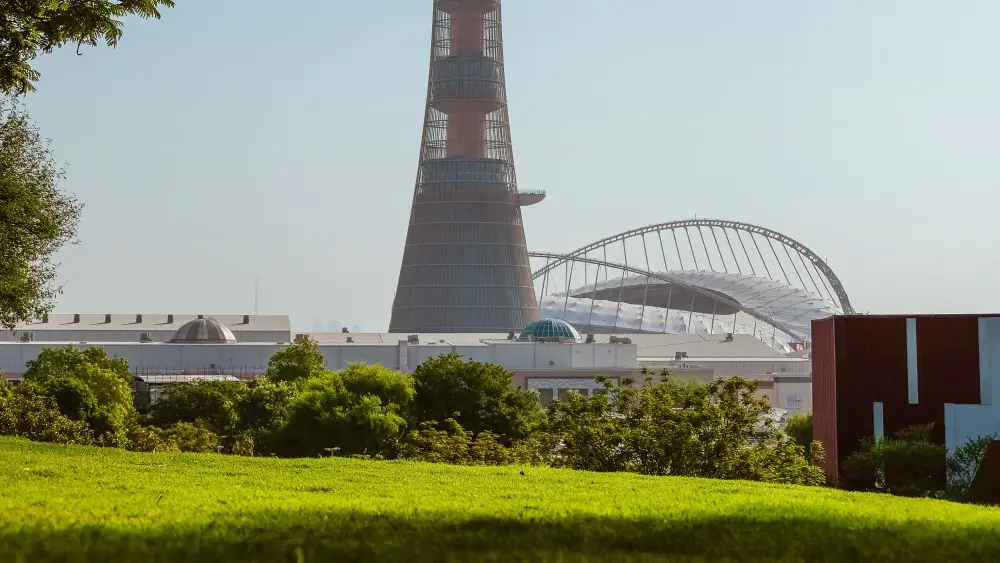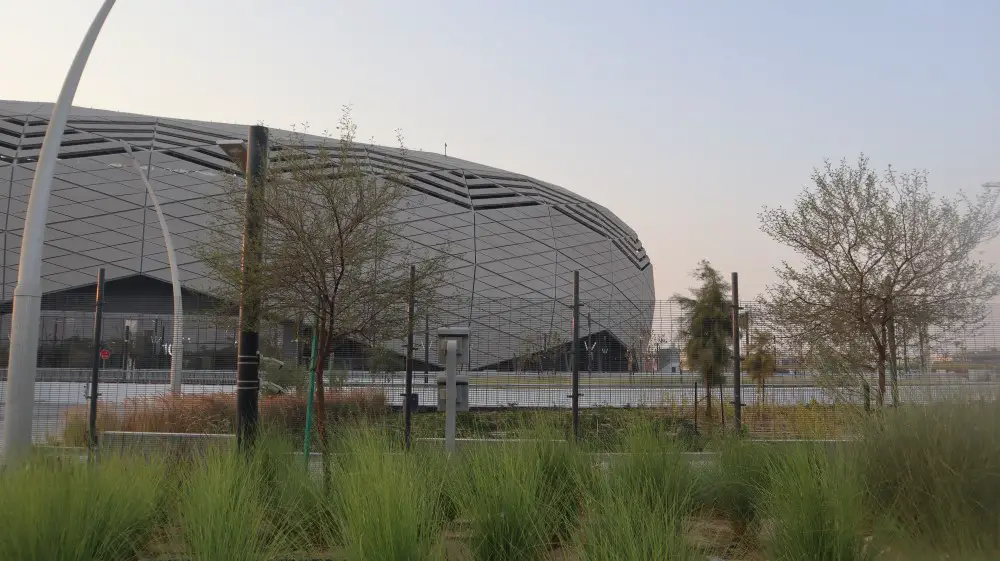After the 2022 World Cup in Qatar, the host nation will either keep, downsize or demolish each of its chosen stadiums. This is for reasons of economic necessity, conservation and lack of demand, as well as other factors.
In this guide, we’ll explore in further detail what Qatar will do with each of the 2022 World Cup stadiums once fans have gone home, why such measures are needed, and what challenges Qatar faces compared with other World Cups in the past.
What is the future of Qatar’s stadiums after the World Cup?
For over 1.5million people travelling from across the world to be at the 2022 World Cup in Qatar, the stadiums hosting matches will be the tournaments’ beating heart. Players, backroom staff and supporters alike will ply their trade in eight spectacular arenas for one month of footballing festivity.
Of the eight venues chosen, Qatar has built six from scratch: Education City Stadium, Lusail Stadium, Al Bayt Stadium, Al Janoub Stadium, and Al Thumama Stadium. It has also improved the remaining two: Ahmad Bin Ali Stadium and Khalifa International Stadium. Each one has been built to impress, with an average capacity of 40,000 pairing with cutting-edge architecture to deliver a fitting platform for football at its highest level.
But, there are questions about the fate of these stadiums once the beautiful game’s biggest spectacle leaves town. Qatar is a small country with little footballing heritage, and, with a population of approximately 3 million people, the number of large stadiums they will possess after the World Cup will likely be unnecessary.
As such, some stadiums will be torn down completely or downgraded in some capacity, whereas others will remain.
Let’s explore each of the stadiums to find out what remains of their future:
Stadium 974
Stadium 974 is one of Qatar’s temporary stadiums for this World Cup, and as such, will be dismantled at the end of the 2022 tournament. The stadium is the world’s first to be designed entirely out of recycled shipping containers, making it environmentally friendly and almost entirely transportable.
Ras Abu Aboud’s stadium has hosted four group games, and now the containers and surrounding structure will begin to be brought down. While not confirmed, there are rumours that the stadium will resurface should Uruguay win its bid to host the 2030 World Cup.
Lusail Stadium

The largest of all Qatar 2022 World Cup stadiums, Lusail Stadium will be the centrepiece of the World Cup final. However, after the World Cup ends, its capacity will be reduced by half, with its lush gold exterior changed to allow for redevelopment.
This beast of a stadium, conjured up by architects Foster+Partners, is only going to remain an international football host for the duration of the 2022 World Cup. After that, it is thought that only community games will take place on the pitch. Upper tiers, meanwhile, will be stripped away for housing, and the majority of the remaining grounds will play host to cafes, schools and other amenities.
Al Janoub Stadium
Located around 22 kilometres south of Doha, Al Janoub Stadium is a new-build stadium that literally translates to ‘Stadium of the South’. After the 2022 World Cup, its capacity will be halved, as its full capacity will not be required by future tenants Al-Wakrah SC.
Designed by Zaha Hadid and her team of architects, Al Janoub Stadium’s exterior shape references the traditional Dhow boats used by local pearl divers in the Gulf. This exterior will remain but the amount of seats will be reduced from 40,000 to 20,000.
It is not known when this stadium will be dismantled but it is thought that the remaining stadium seats will be donated to developing countries for their sporting venues. Whether this is fulfilled remains to be seen.
Khalifa International Stadium

Khalifa International Stadium has been established as an international sports venue ever since its inauguration in 1976. There is no sign of this changing after the 2022 World Cup, with the stadium still being used as a stage for football, athletics and other sports.
It was once envisaged that Khalifa International Stadium would be expanded to a 60,000 seat stadium, but this is now unlikely to happen following the World Cup.
Ahmad Bin Ali Stadium
At 45,000 seats, Ahmad Bin Ali Stadium is on the smaller scale of Qatar World Cup 2022 stadia. Located in the ancient city of Al-Rayyan, it has been designed with recyclability and reusability in mind.
This means that, following the World Cup in Qatar, the stadium will donate half of its seats to countries with a lack of sporting infrastructure. After this reduction, the remaining capacity will be around 20,000 seats, with local teams Al Rayyan and Al Wakrah moving in.
Al Thumama Stadium
Al Thumama Stadium, close to the heart of Doha, was built to resemble a cornerstone of Arabian culture: a gahfiya, which is the cap worn underneath a ghutra.
After the Qatar World Cup 2022, Al Thumama Stadium will reduce its capacity to around 20,000 seats, with a hotel and sports clinic being built in place of the reduced areas. However, it is thought that football matches will continue to be played after the World Cup.
Education City Stadium

In the heart of Qatar’s Education City, Education City Stadium is a 40,000 seater stadium that, much like many of the tournaments’ venues, will be reduced in capacity to around 20,000 seats following its conclusion.
It is hoped that the 2020-opened stadium will see two new schools built on its grounds following 2022’s festival of football.
Al Bayt Stadium
Al Bayt Stadium, one of the bigger of Qatar 2022’s hosting venues, hosted the first game of the tournament. After the World Cup, it will have the same fate as many of the other featured stadiums, with capacity being halved from 60,000 to 32,000 seats.
The removed seats will be donated to other countries who need sporting infrastructure, and the remaining areas will be repurposed into other amenities, such as a sports medicine hospital and stores, as well as a five-star hotel and shopping mall.
Do World Cup hosts always demolish their stadiums?
It is not always the case that World Cup hosts demolish some of their stadiums after the tournament finishes. In countries where there is a more established sporting infrastructure, such as Germany in 2006 and France in 1998, all of the venues remain as a home for local sporting clubs. In fact, many stadiums that have been used in tournaments over the past century continue to be packed with fans all season round.
When will Qatar’s stadiums be changed after the World Cup 2022?
At present, not much is known about when Qatar will begin to either dismantle or alter the stadiums of the 2022 World Cup. What we do know in these cases is that it will not be too long, as developers have already made plans for the areas where either part or all of the stadiums used to be.
Last Updated on 29 January 2023 by Michael